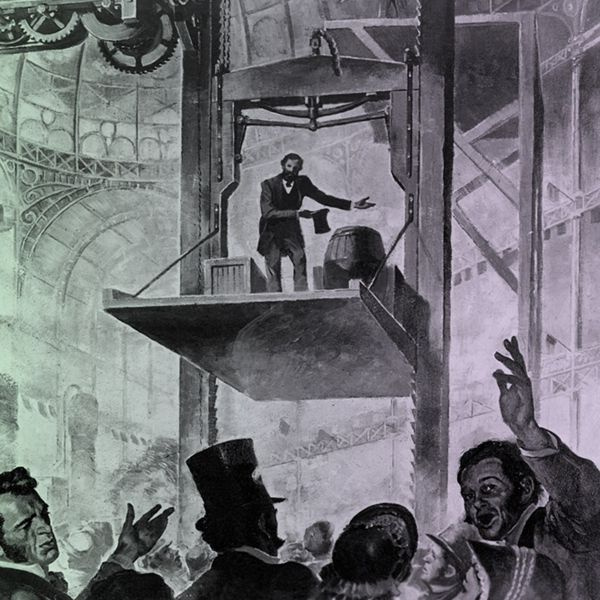
On June 22, 2017 in the German city of Rottweil (100 km south-east of Stuttgart) an unusual presentation took place. The international conglomerate ThyssenKrupp presented to the amazed public the world's first elevator Multi without cables. Moving on the principle of the maglev, this elevator travels through the floors of the building, as well as along the corridors in the horizontal direction. The movement pattern of the Multi lift system in the Tower of Light building is shown on the left.
Tower of Light - one of the tallest skyscrapers in Germany,
writes Wired. This 246-meter concrete tower, worth € 60 million, is at the same time a testing ground for the most modern lift engineering technologies. It initially provided 12 mines specifically for testing elevators. The concrete foundation of the mines was specially reinforced to withstand the free fall of 40-ton elevator cabs at a speed of 160 km / h.
The skyscraper - the brainchild of architects Helmut Jan (Helmut Jahn) and Werner Sobek - is planned to open in July 2017, and the unusual Maglev lift was the final finishing touch of this project. Three of the 12 lift shafts of the building are designed specifically for testing Multi.
ThyssenKrupp engineers hope that an innovative elevator will successfully manifest itself during long-term operation, and then other buildings around the world can be equipped with such elevators. And this is not just a convenience for passengers, it will change the very principles of the architecture of buildings, because now the architects will not be limited to the vertical orientation of the elevator shafts around which the rest of the layout was built. And if the appearance of skyscrapers changes, then the appearance of cities will change: this is so thanks to the new design of the elevator.

If you look at the history of elevators, they have always been suspended from cables from the very invention of Archimedes. The modern version of the elevator appeared with the invention of the system of safe braking (1854, inventor Elisha Otis) and after switching from steam boilers to electricity - in 1895, and so far cables have always been used.
Experts say that the elevator industry is a very interesting example of an extremely conservative market. There are only five large companies operating on the world market, and almost all of them are very old, real dinosaurs. This is the world leader Otis, the company was founded by the family of the same inventor Otis. As well as Schindler, Kone, Mitsubishi and ThyssenKrupp - a relative newcomer who began producing elevators in 1954. For decades, they have been dividing the market, making virtually no technological breakthroughs, only minor improvements in the existing technology created in the 19th century. The invention of lifts without cables is a real technological leap, which has not been for a very long time.
In the Multi elevator, linear motors are installed, similar to those used in maglevs and HyperLoop trains. The video shows how the cab moves along the rail, and at the turn the rail turns 90 ° - and the elevator can change its direction of movement from vertical to horizontal or vice versa. The turn takes a few seconds, and the maximum speed of the elevator is about 5 m / s. This is not very much. For comparison, the world's fastest elevator in the Shanghai Tower develops a speed of 18 m / s (64 km / h).
ThyssenKrupp first introduced the idea of the Multi elevator
in 2014 , provoking a mixture of admiration and skepticism among commentators. Now, three years later, she conducted the first public test of an elevator without cables - and proved that this is indeed possible.
In the ThyssenKrupp vision, the building can have a fairly advanced elevator shaft system, with many branches and turns. The elevator software will plan the best route to go around the congestion and deliver the passenger in the shortest possible time. Moreover, the system of mines can ply not one, but several elevator cabins, which will coordinate their location so that their routes do not intersect.
Most importantly, the new technology of elevators does not have the technological limitation of cable elevators to the maximum height. It is known that the cable can not be longer than about 500 meters, because it can not withstand its own weight. Thus, traditional elevators can not rise to a greater distance, passengers have to change to another elevator. Maglev has no such limitation. Now architects do not need to take these nuances into account when designing skyscrapers, and they can create more free-form buildings.
One German developer OVG Real Estate has already agreed to install elevators with linear motors in its new building - the future building of the East Side Tower in Berlin. Multi elevators are ideal for skyscrapers. True, we are unlikely to see a large number of such elevators in the near future, because the Multi system costs about five times more expensive than a regular elevator.